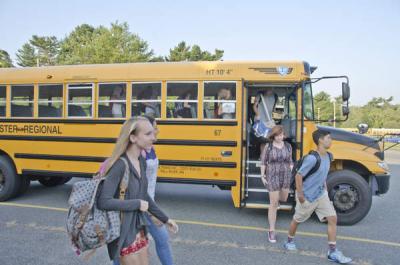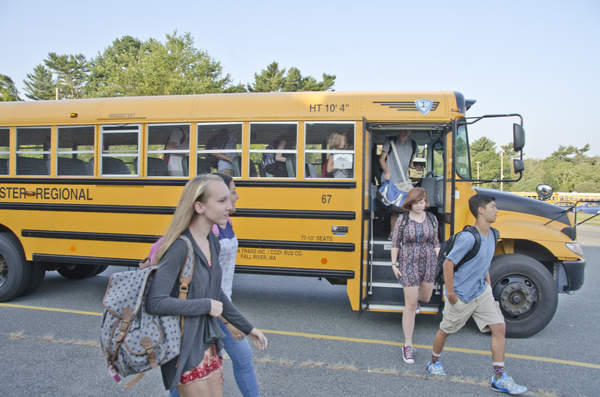School Committee approves 15 slots for school choice
Although 17 school choice students are graduating, the Old Rochester Regional School Committee decided to approve only 15 new slots for the coming school year. And fewer slots could be available in coming years.
On Wednesday night, the committee discussed the value and cost of the school choice program that allows schools to accept students from out of district. The district receives a reimbursement of $5,000 per school choice student.
ORR first opted into the program in 2010, enrolling 15 students. That number rose over the years to a high of 93 students in the 2013-14 school year.
The School Committee decreased the number for the next two years, in part, to keep classe sizes in check at the junior high.
At the high school, Principal Mike Devoll said he’s always considered 700 a “healthy number” for the school, and the population without school choice hovered in the mid to high 600s until recently. Not including school choice students, the high school's population was 785 last year and is presently 701.
“As budgets got tighter and as the needs of the school increased we increased our school choice seats,” Devoll explained.
This school year there were 72 spaces allotted at the high school, 70 of which are filled since two students returned to their home districts.
In speaking with administrators, Superintendent Doug White said 15 new slots were recommended, two fewer than the current year. They would be divided among the seventh, eighth and ninth grade classes. All existing school choice students are ensured a place through graduation.
“If you choose not to replace them, then we have some steps that need to be taken to manage a $90,000 shortfall,” said White.
But Mattapoisett Finance Committee Chair Pat Donoghue said the cost of relying on school choice for the budget was much greater than that. She said when the law for school choice went into effect in 1991, the reimbursement per student was capped at $5,000. It hasn’t changed in 25 years, and after speaking with someone at the state level, she said it’s unlikely to change.
Doing the math, Donoghue said the cost per student at ORR is $15,000 each, and the school already has a higher student to teacher and student to administrator ratio than the state average.
“I think sooner or later we’ve got to wean off of it,” she said of school choice. “It’s not going to get any better, it’s going to get worse.”
Donoghue said she didn’t resent the school choice students, but that bottom line to the budget is a problem.
To get rid of school choice at this point in the already tight budget would mean a reduction in services, said the superintendent.
School Committee members seemed conflicted over how to respond.
“I don’t disagree with the wonderful things they bring,” Tina Rood said of school choice students, “but using it as a method to round out our budget…we need to start weaning ourselves in some way.”
As the School Committee waits on a response from tri-town finance committees to its current budget draft, Chair Paul Goulet was uneasy about further complicating the numbers.
“We can’t sustain any hits,” he said. “We still have to move forward with this year.”
Cheryl Hebert suggested discussing a “serious long-term plan” going forward while Cindy Johnson favored keeping school choice.
“I believe the students that we accept enrich our student population,”
she said. “I would be adamantly opposed to ratcheting back or eliminating school choice.”
She made a motion to approve the 15 slots proposed by White, five in the seventh grade, two in eighth and eight in ninth. The motion passed unanimously.
















